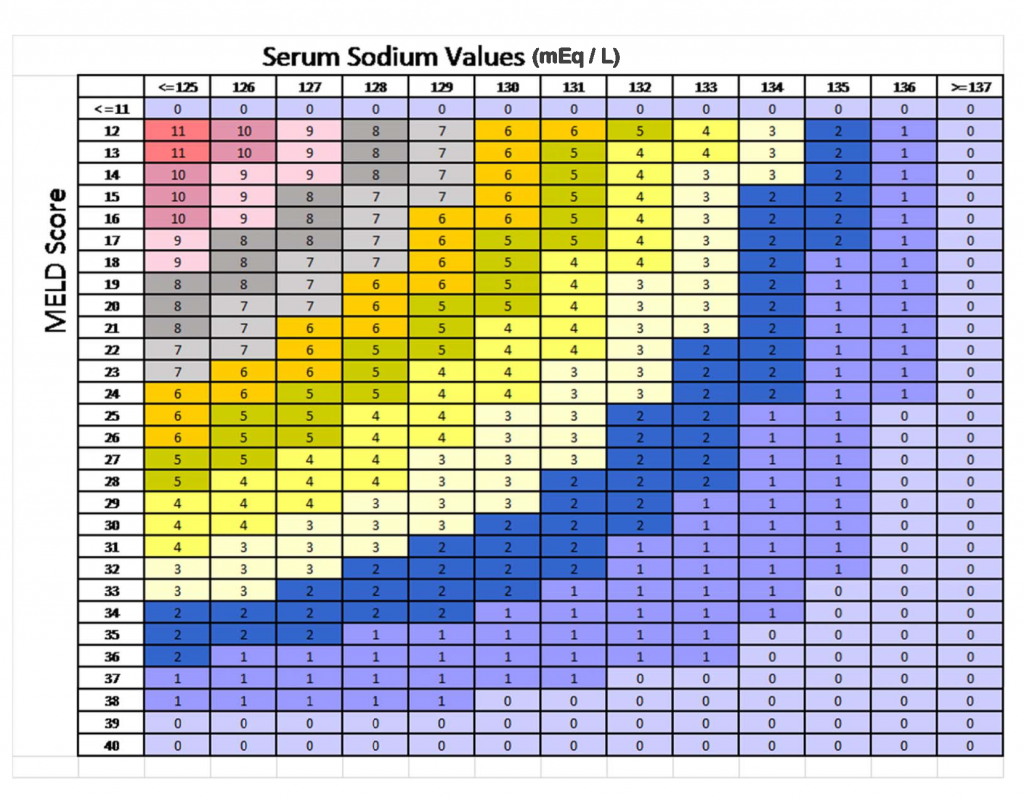New Resources Available for Liver Transplant Programs
On January 11, 2016, OPTN Policy 9.1 (MELD Score) will be updated to include serum sodium as a factor in the calculation of the MELD score. This policy was approved by the OPTN/UNOS Board of Directors in June 2014. (For additional reference, consult the July 24, 2014 policy notice.)
The addition of this factor to the MELD calculation will affect the scores of specific transplant candidates in different ways. Some will not change at all. Others may experience an increase of a few MELD points, while a small subset of candidates (especially those with serum sodium values lower than 128 mEq /L) may have MELD scores increase by as many as as 11 points. The attached chart illustrates the number of additional MELD points candidates will receive based on their pre-implementation MELD score and their serum sodium value.
Please note that some candidates whose MELD scores increase as a result of this policy will be subject to recertification of their lab values on a more frequent basis, as outlined in OPTN Policy 9.2. At the time of policy implementation, transplant programs will have a seven-day grace period to update and report lab values for candidates specifically affected by the addition of this value. In order to prepare in advance, however, we recommend that you begin to identify candidates who may be affected by this change and make advance preparations to schedule lab testing and reporting.
To help liver program staff identify candidates whose scores are most likely to increase, UNOS has added currently reported serum sodium values to the Liver Candidate MELD/PELD Report available in UNetSM under Waitlist:Reports. In addition, UNOS has added all data fields used to calculate MELD and PELD scores, including serum sodium, to the “Create Custom Report” function, also available under Waitlist:Reports. Either report will allow program staff to sort candidates by their currently reported serum sodium values, then use the attached resource chart to determine those whose MELD score is likely to change significantly upon policy implementation.


